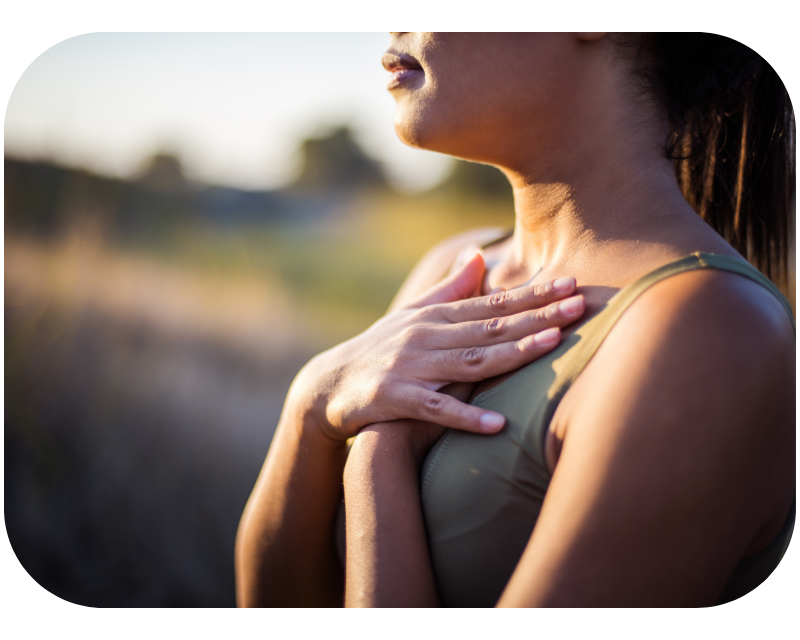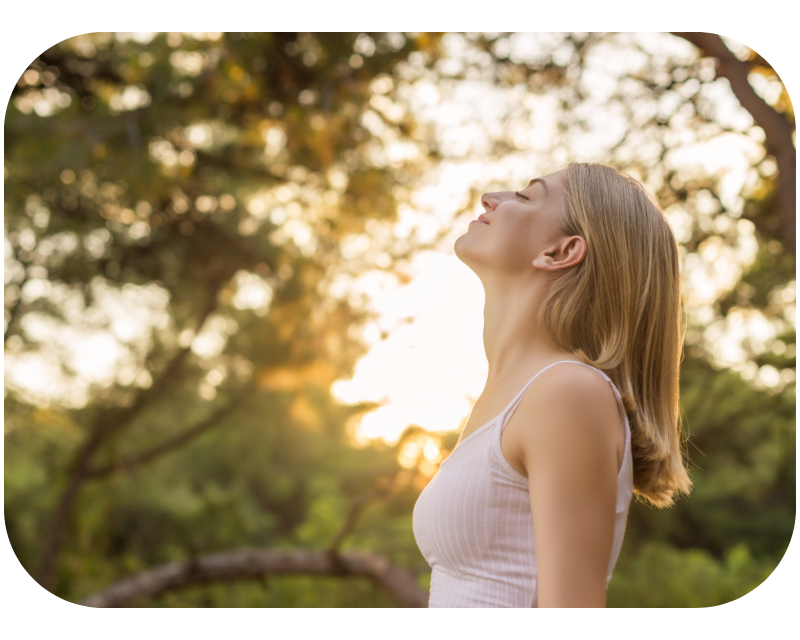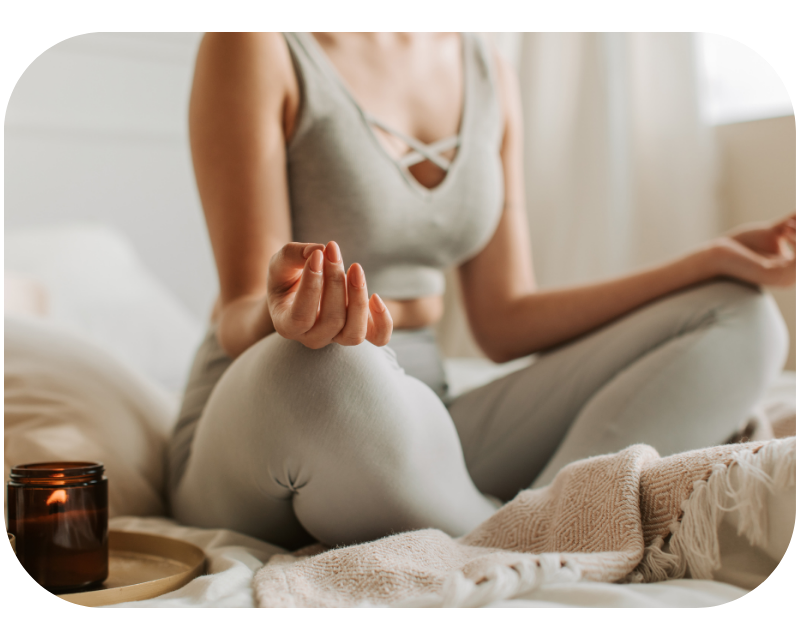The world has become a hectic place; we live busy lives filled with endless tasks to complete. Some of us are working full time, some are managing the massive job of being a parent, all the while juggling family commitments and running our social calendars. Our minds are in constant overdrive, and our bodies are in a constant fight-or-flight state.
In the past five years alone, we have encountered unprecedented situations such as a cost-of-living crisis. This has brought huge financial uncertainty into people’s lives. The global pandemic introduced significant health challenges and resulted in economic instability, accompanied by a worldwide lockdown. This period was marked by considerable stress for numerous individuals. Research conducted during this time indicated that screen time and social media usage increased by 30% in the United Kingdom. Social media has now become a huge part of people’s daily lives, pressuring individuals to present a perfect image of themselves and their environment. This can leave us feeling inadequate, stressed, and full of anxiety. These are just a few examples of the external factors we are facing alongside internal societal issues that are leading to a rise in anxiety, tension, and stress.
It is so important to try and bring calm into our lives, as our bodies work optimally when we are in rest and digest mode. This is when our parasympathetic nervous system (PSNS) takes over body function. It slows down our heart rate, lowers blood pressure, and conserves energy. It allows our body to restore and heal. Several of our body’s organ systems work at their peak in this physical state, such as the respiratory system; by slowing down our breathing, it promotes relaxation and helps to balance oxygen and carbon dioxide in our blood. The PSNS also helps the digestive system work at peak capacity. Have you ever wondered why you feel sleepy and lethargic after a large meal? This is due to the activation of your PSNS, which begins to digest your food. It increases digestive enzymes and stomach acid, slows down your heart rate, and redirects blood flow to the stomach and intestines. As a result, less blood is available to the brain, causing feelings of tiredness and sluggishness. It is also responsible for bringing blood flow to your reproductive system, which is essential for optimal function, especially for those focused on fertility, menstrual health, and hormone balance, as well as helping to promote sexual arousal and lubrication. Another great reason to get your parasympathetic nervous system working.
Unfortunately, we all seem to be in fight-or-flight mode, the nickname for our sympathetic nervous system (SNS). When this is activated, its function is to be ready to deal with threats and survive intense situations by releasing cortisol and adrenaline into the body. Elevated cortisol levels inhibit the immune system, thereby preventing the body from healing and repairing effectively. A constantly active SNS can raise heart rate and blood pressure, stressing the cardiovascular system; it can cause imbalance, affect physical and mental well-being, and disrupt hormonal balance and blood sugar levels. It can lead to anxiety, depression, sleep issues, and even burnout due to prolonged hypervigilance. Your digestive system can be affected, and as we are coming to realise, the gut microbiome is our second brain and sends messages via the vagus nerve, which regulates the PSNS. The gut makes brain chemicals such as serotonin (the feel-good chemical), dopamine (which helps you feel energised and motivated), and GABA (which is responsible for calming the nervous system). When these systems are suppressed, we are unable to regulate our mood properly. There are many simple yet effective things that we can do to help stimulate our PSNS and make us feel more in control of our body and mind.
Breath work

It is a really crazy statement to make; however, did you know most of us do not breathe correctly! Due to held tension, poor posture, and lack of training, the amount of breath we intake is not sufficient to allow us to get the benefits breathing has to offer. Breathing techniques can enhance physical and mental well-being. Diaphragmatic breathing is highly effective, as it optimises metabolic efficiency. This technique regulates muscles and hormones, balances the nervous system, supports organ function, boosts immunity, oxygenates blood, and reduces stress levels. Lay on your back, place your hand on your stomach, and as you take a deep breath in, allow your abdomen to fill with oxygen; when you breathe out, push your belly button towards your spine, expelling all the air. Do this five times and notice how you feel afterwards.
Box breathing, also known as square breathing, is a modern technique that regulates the nervous system, reduces anxiety, enhances concentration, calms the mind’s thoughts, and encourages mindfulness and emotional regulation. Athletes are taught this technique to improve and ensure peak performance. To practice this type of breath work, you must breathe in a pattern of four equal-length breath phases: inhale for a count of four, hold for four, exhale for four, and hold for four. The length of breaths and holds can be catered to a person’s individual needs and capabilities. This type of breathing is extremely relaxing.
Humming bee breath, also known as Bhramari Pranayama (Bhramari meaning bee), is great for enhancing concentration and reducing agitation and stress; the vibration stimulates the vagus nerve. It has been proven to help with insomnia. It is also used as a complementary therapy for mental health patients to manage negative emotions and combat anxiety. The vibration that runs through the body stimulates the PSNS, helping the body to enter rest and digest mode. Sit comfortably, close your eyes, and take a few deep breaths. Gently close your ears with your index fingers, take a deep breath in, and on your exhalation, hum (a smooth deep mmm) as you expel the breath, focusing on the vibration running through the body. Take 5-10 rounds or as many as feels good to you.
By practicing breath work, you will become calmer and less stressed and can use it any time and any place to bring instant stress and anxiety relief.
Nature is your friend

Nature gives many of us a feeling of well-being; it connects us to the earth and grounds us by allowing us to receive the earth’s subtle vibration and its natural electromagnetic field. When we walk in nature, especially on uneven ground, we have to be present; it makes us more aware of our surroundings, we become conscious of our movements, and we become more mindful. There are many studies that support the benefits of grounding, such as mood improvement, cortisol decrease, it resyncs your internal rhythms, and reduces inflammation in the body. Nature is full of rhythmic stimuli such as birdsong, water flow, and wind in the trees. Focusing on these things subconsciously allows our PSNS to kick in, and all the good stuff starts to happen; stress and tension leave the body. Unfortunately, everything in today’s society takes us away from nature, from the shoes that we wear on our feet to the concrete streets we walk on; we do not touch the earth, and this disconnects us from its energy.
We rarely have an opportunity to connect with the soil. Overuse of artificial light affects our circadian rhythm; this is the system that regulates our hormones, sleep, digestive health, and mood. Our bodies naturally respond to light and dark. The body wants to wake when the sun rises and sleep when the sun sets, but with all the artificial light in our world, our bodies do not get to rest and repair. Did you know that light pollution is one of the most serious disruptors of human health, wildlife, and our ecosystems? 83% of the world lives under a light-polluted sky. It is so important to try and keep our circadian rhythm aligned with the natural world. Taking in the first light in the morning resets your internal clock and allows you to reset and start the day right. Walking in nature is an effortless way to ground yourself. Try and be present; do not look at your phone or listen to music; be in the moment. It helps the body regulate naturally. Walking barefoot is also a particularly effective way to ground yourself. Notice how good it makes you feel to be in the natural world with no distractions.
Meditation

Meditation is a way in which you can find calmness. Studies such as the Johns Hopkins paper on meditation found that it is just as effective as taking antidepressants for some forms of anxiety and depression. Brain scans of people who meditate show reduced activity in the part of the brain that is responsible for rumination and mind-wandering. It reduces stress and anxiety by encouraging a person to be mindful and breathe with intention; anxiety has been found to lessen by 60% when participating in meditation. Focus and clarity increase when time is given to be still; our bodies move into rest and digest. When we are not in the fight-or-flight mode, our body is given time to repair, and our minds become less reactive; this can bring in a positive mindset and a deeper sense of purpose, a feeling of peace. People can be put off by the idea of meditating, as some picture a yogi levitating cross-legged from the floor, but meditation can be tailored to your own individual style. Just sitting or lying down in a quiet room and breathing is an accessible way to start, and if your mind wanders, just try to concentrate on your breath. This can also be difficult, so finding a mantra and repeating it over and over in your head can be helpful. For example, “Today I am going to have a good day and not worry about the small stuff.” Something simple to concentrate on can shut out the mental noise of the mind. In yoga, the mind is likened to a chattering monkey jumping from thought to thought. The goal of yoga is not to bend like a pretzel; it is to learn to control the mind’s chatter and be still physically and mentally. Under the noise is your authentic self, and when the mind is still, you can rely on and trust in your own inner knowing and intuition. If we felt we had the true answers to all our minds’ worries and trusted in ourselves wholeheartedly, anxieties and stresses would be minimised.
All these techniques have the same goal: to find stillness, to become present, and to trust in ourselves without the need for external validation. Stress and anxiety are the cause of so much dis-ease. We all are capable of learning ways to control our thoughts and feelings. It just takes practice. We have the choice in how we react and what we allow to affect us. Let us take the steps today to start to rely on our own inner knowing and look after our mental and physical health by using techniques to help us find the calmness within. Explore our services to discover how we can guide you on this journey.


